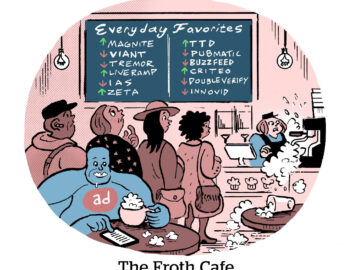

Thank you!
Just one more thing before you go...

Why It’s More Important Than Ever to Own Your Audience Data
In 2010, there were a mere 400 million people on Facebook. The company was young and growing, and was friendly to brands and publishers. “Build your audience on Facebook!” they said. “Make them like your page and everyone will find you!” So, that’s exactly what brands and publishers did. Every small business did it. Every restaurant did it. Life was good!
And then, a few years later, the rules changed. Suddenly, if you posted an update to your page, no one saw it unless you paid Facebook to promote it. All these companies that had built these massive audiences on Facebook discovered they weren’t building their own audiences at all — they were building Facebook’s.
And that scenario is playing out again and again (and again) on Android, on Apple, on TikTok and on every other platform that stands to gain from controlling an audience.
Pay attention to any business that sits between you and your users.
That business might not be taking a cut right now, but they could be in the future. And this tension is at the heart of one of the most disruptive changes happening in the advertising landscape today: the deprecation of identifiers.
Apple and Google are already retiring the cookie. They’re also deprecating the device ID. Apple has already enacted it — and Google will follow suit in the next two years. And they’re doing it under the pretense of protecting user privacy. But what they’re really doing is setting themselves up to be able to own the rails and gain an unfair advantage over the entire digital ad ecosystem.
It works like this: Apple’s Hide My Mail (for example, there are others that do this too) creates a different email address for you on every site you go to, whether you’re buying something from Best Buy or signing up for news on Insider, BBC, or the New York Post. And today, that seems kind of innocent. Apple positions itself as just looking out for the consumer.
But guess what? They could flip a switch tomorrow and control the entire advertising ecosystem and underlying infrastructure of the internet — because they control the ID for an individual across domains.
If that sounds alarmist, I assure you it is not. And that’s a reality that every single publisher needs to be ready to face.
That 30 percent cut that Apple takes in the app store? There’s nothing to stop Apple from extending that to every area of their reach. And I don’t mean to just pick on Apple — that’s true of any platform that sits between you and your audience. And that means any one of them could charge a fee for measurement solutions, for targeting solutions, and even simple affiliate services.
What’s billed as a privacy strategy is just a way to own, and control, the entire ecosystem.
Even if you own your own first-party data and you start your own ad business like Amazon has, you still have to worry. Sure, you know what customers are searching for and you know what they buy; and in Amazon’s case, you even know what they watch on TV and what music they stream.
But let’s just say somebody signs up with Apple Hide My Email, an advertiser is not going to trust Amazon to grade their own homework. You’re going to want a third party to measure and audit the results. And the only way to have a third-party measure this information is if it’s the same ID used by the third party. And they won’t have it.
Currently, there is no consensus on a unique identifier that works across browsers and devices. The best solution we have now is email; but with the proliferation of machine generated anonymous emails, there is no way for a third party to ingest these lists and compare for any common addresses. This is the bubbling issue the industry is facing.
The punch line here is that these large platforms have held one over on us before — and they can do it again. You invest time building an audience that someone else ends up controlling.
Instead, publishers and brands today should make sure that they own their own audience. You want to minimize your exposure to “privacy” initiatives that aren’t really about privacy at all, and you shouldn’t accept signups from these platforms. Find a technology alternative that lets you verify who your audience is. And of course, you need to give consumers a reason to consent to share this information in the first place.
If you don’t, you’re just waiting to be cut out of the picture when a new platform gets between you and your audience.
View the original article in ANA.

Machine-Generated Email Cost Calculator
Unlock additional revenue by integrating with Identity lockr.
Select your industry vertical.
How many registered users or newsletter subscribers do you have?
Average monthly emails sent to each subscriber per month?
What is your average email open rate?Optional
What is your average email click rate?Optional
Has lockr previously analyzed the machine-generated emails in your first-party data?
What was the percentage?
Enter your RPM (page revenue per 1,000 sessions).
What is your average monthly subscriber growth rate?
What is your anonymous web visitors monthly pageview traffic?
What is your authenticated monthly pageview traffic?
Projected Incremental Revenue
Projected Annual MGE Overhead
| MGE Fees | $0 |
| MGE Lost Email Revenue | $0 |
| MGE Advertising Leakage | $0 |
| One month of Email Jail | $0 |
| Incremental Revenue | $0.0M |
Enter your email to receive the full report.
Are you sure you want to leave?
Changes you made will not be saved.







